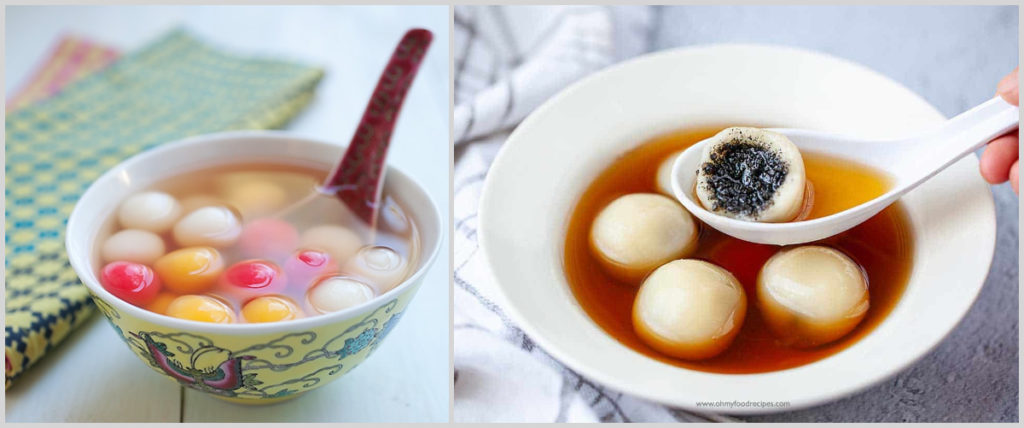Winter Solstice Festival, also known as Dongzhi Festival (冬至) falls between December 21 – 23 every year – this year, we celebrate it on December 21. On this day, countries in the Northern hemisphere have the shortest day and longest night. This day is also colloquially known as “everyone’s birthday”, as it is the first day of a new solar term, and everyone becomes a year older.
Traditions and customs for the day vary in different areas. In Malaysia, we celebrate by coming together as a family and enjoying a winter solstice delicacy – tang yuan (汤圆). Tang yuan is a glutinous rice (beras pulut) ball with a variety of sweet fillings, such as black sesame (bijan hitam), peanuts (kacang), or red bean (kacang merah). These glutinous rice balls are boiled and then served with a sweet (manis) ginger (halia) syrup. Traditionally, tang yuan is white, but because people have started consuming the food year-round as a dessert, they now come in a wide variety of colors (warna) and fillings.
There are two ways to make tang yuan. The first method, more commonly used in northern China, is placing round balls of the chosen filling into bamboo baskets with rice flour (tepung beras) and rolling them around while continuously sprinkling water so that the flour sticks onto the paste. The second way is popular in southern provinces of China: using sticky rice flour to wrap the filling and then compressing them into balls. Alternatively, one may create small balls of sticky rice flour and make a hole to insert filling, then close the hole and smooth it out by rolling it in one’s hands. This method will create larger pieces than the first method.
Today, you can find ready-made tang yuan in the frozen section of the supermarket or at some Chinese restaurants, so get yourself a bowl of tang yuan and don’t forget to wish everyone happy birthday on Monday!



